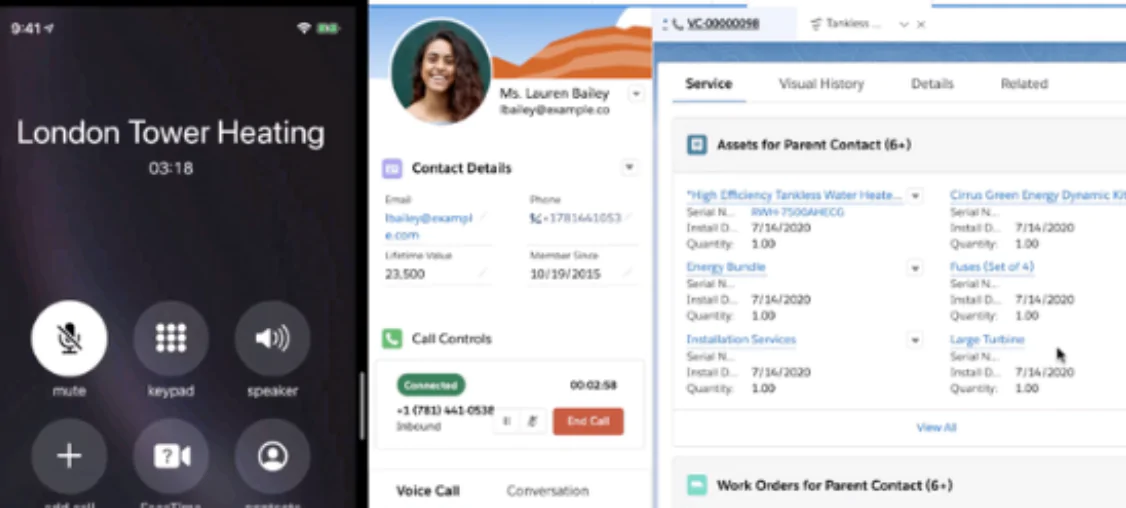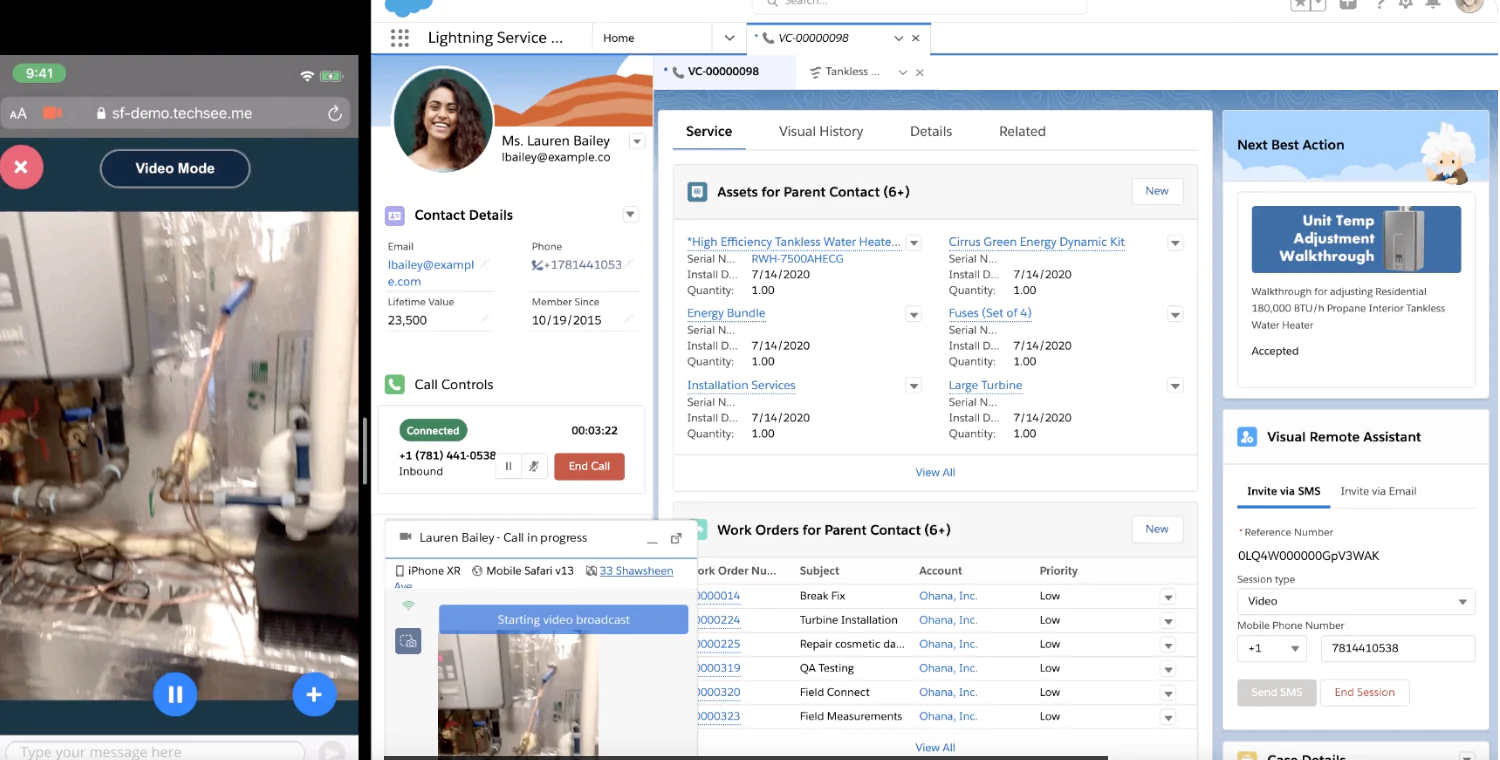Salesforce Virtual Remote Assistant: Engaging Customers and Employees Anywhere with Real-Time, Visual Support

Customer Service is critical to the success of any business – big or small. It makes or breaks customer experience. When done properly, it helps customers get answers to their questions and solve their problems efficiently. Ultimately it prevents churn and nudges your customer towards repeat business with your company.
Empower your customers and employees with Virtual Remote Assistant
The world is changing. “In-person” services are on the decline: over the last 18 months, we’ve noticed that companies are taking significant precautions around their field service activities due to safety concerns on the back of the pandemic. Yet consumers want support and services faster than ever before. Virtual Remote Assistant (VRA) can help you kill two birds with one stone: reducing the need for field activity but also accelerating your first response time.
Gone are the days of waiting around the house for a technician to arrive “between the hours of 10 and 2” – VRA can be launched straight away from the initial phone call.
Powered by Salesforce Service Cloud, your representatives can leverage their existing console to access a 360 degree view of the customer with all the relevant information at their fingertips, invite the customer to a Virtual Remote Assistant session, plus provide expert support to boost not only your customer’s satisfaction, but your customer service metrics too.
How does the Virtual Remote Assistant (VRA) work?
Through a new remote support software, support agents and product specialists can be connected to the customer in real-time through mobile video support. A “one-click” link gets provided to the customer by an SMS or email message and the customer’s phone then becomes a window through which the support agent is able to identify and fix any issues identified. The agent is then able to guide the customer’s camera to ensure they’re covering all bases during the call.

Virtual Remote Assistant also supports augmented reality (AR), allowing agents to display relevant graphical information on the customers mobile screen, and provide annotations to further contextualise the solution to their issue.
What is the key to VRA’s simplicity? There is no additional software or downloads required. The session is simply and instantly opened in a mobile browser, meaning this level of support can be accessed by anyone with a mobile device and active internet connection.
If you need support because of your dodgy internet connection, Virtual Remote Assistant also has you covered there! VRA can be adapted for use in low signal conditions, reducing the video quality or even downgrading to still frames if required, meaning you can still access VRA sessions for a swift solution when on a limited mobile connection.
Virtual Remote Assistant (VRA): Real life scenario
Washing machine on the blink? Freezer not freezing? Solar panel underperforming?
Let’s take a look at where VRA is used in a real life scenario:
John has an issue with his washing machine. The lid of his top loader isn’t remaining shut as expected. He’s tried everything on his end, and decides he needs technical support.
He calls the support number on the back of his washing machine. A support agent picks up the phone and answers a couple of questions around the model of machine and the problem being faced. Based on the answers provided by John, Service Cloud provides the agent with some suggested approaches to fix the issue.
One of the fixes that the agent wants to try is a “hard-reboot” of the machine. John is unsure of how to do this, so the support agent suggests using a VRA session to assist, asking John if he would like the invite to be sent via SMS or email. As John is with his phone, he chooses SMS.
Within seconds, John receives a message containing a link. He clicks the link which opens a browser on his mobile device.
The VRA session has begun, and the support agent can now see the machine as John sees it, via his back-facing phone camera. The support agent asks John to show them the issue, which John is able to do via his camera. Diagnosing the problem, the agent provides verbal instructions to John on how he can reset his machine, and annotates on his screen to show him which buttons to press.
John’s machine resets successfully, and the lid closure is now triggered as expected to allow John to use his machine again. The support agent is now able to close John’s case as solved.
John is blown away at the efficiency and expertise of the support agent and the VRA session that he tells all his friends and family about it.
How ProQuest can help…
We’ve committed the last 7 years to helping our customers unleash the power of Salesforce through sharpened operational excellence. As Australia’s number one Salesforce partner for Field Service solutions, we can’t wait to add VRA to our implementation toolkit for new solutions across the country; building further on our impressive portfolio of Field Service solutions.
Get in touch with the ProQuest team today to learn more about VRA and how we can help you implement it into your business. Contact us at sales@proquestit.com
Image source:
www.salesforce.com/au/products/service-cloud/features/visual-remote assistant/
https://www.salesforce.com/blog/remote-virtual-assistance-service/














